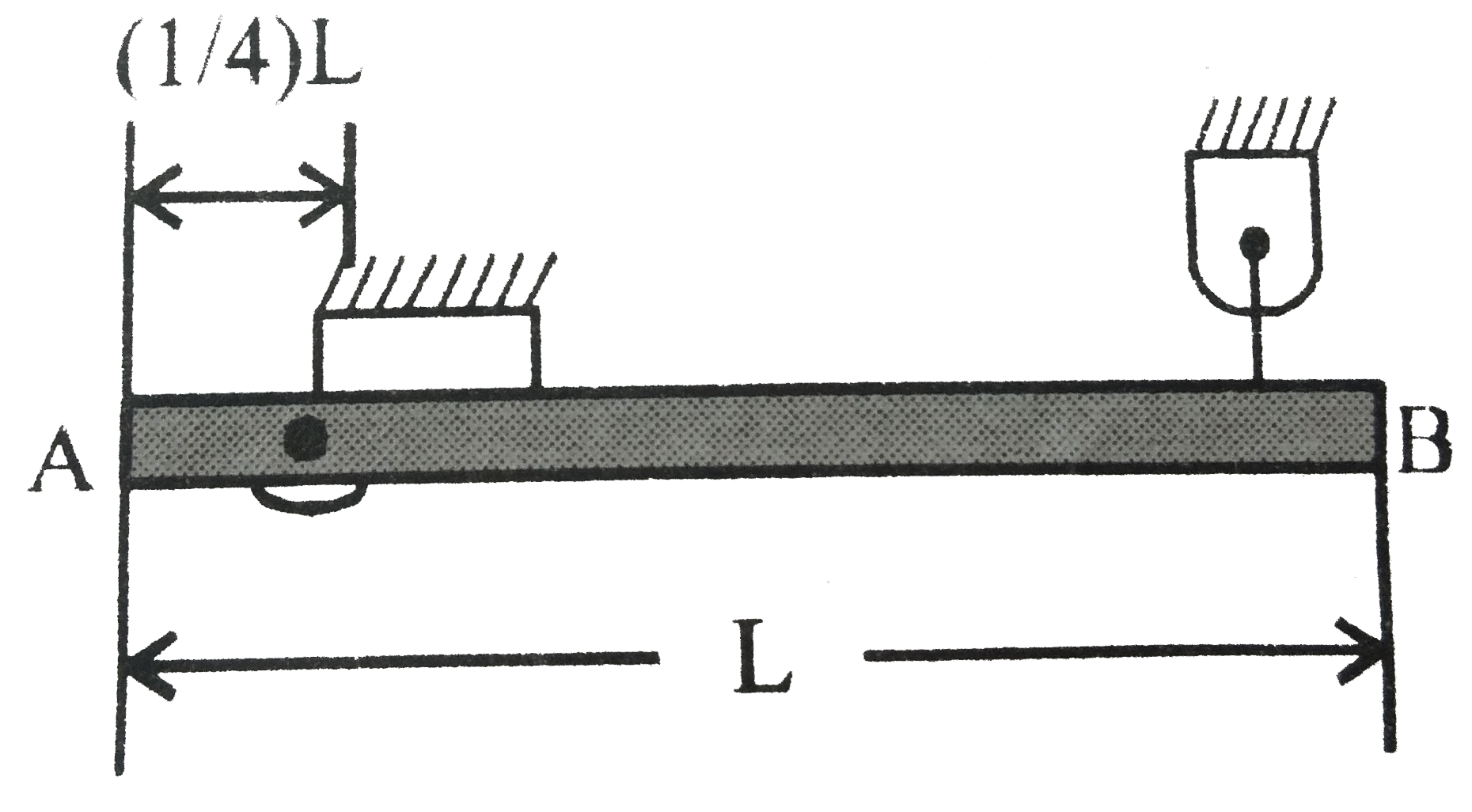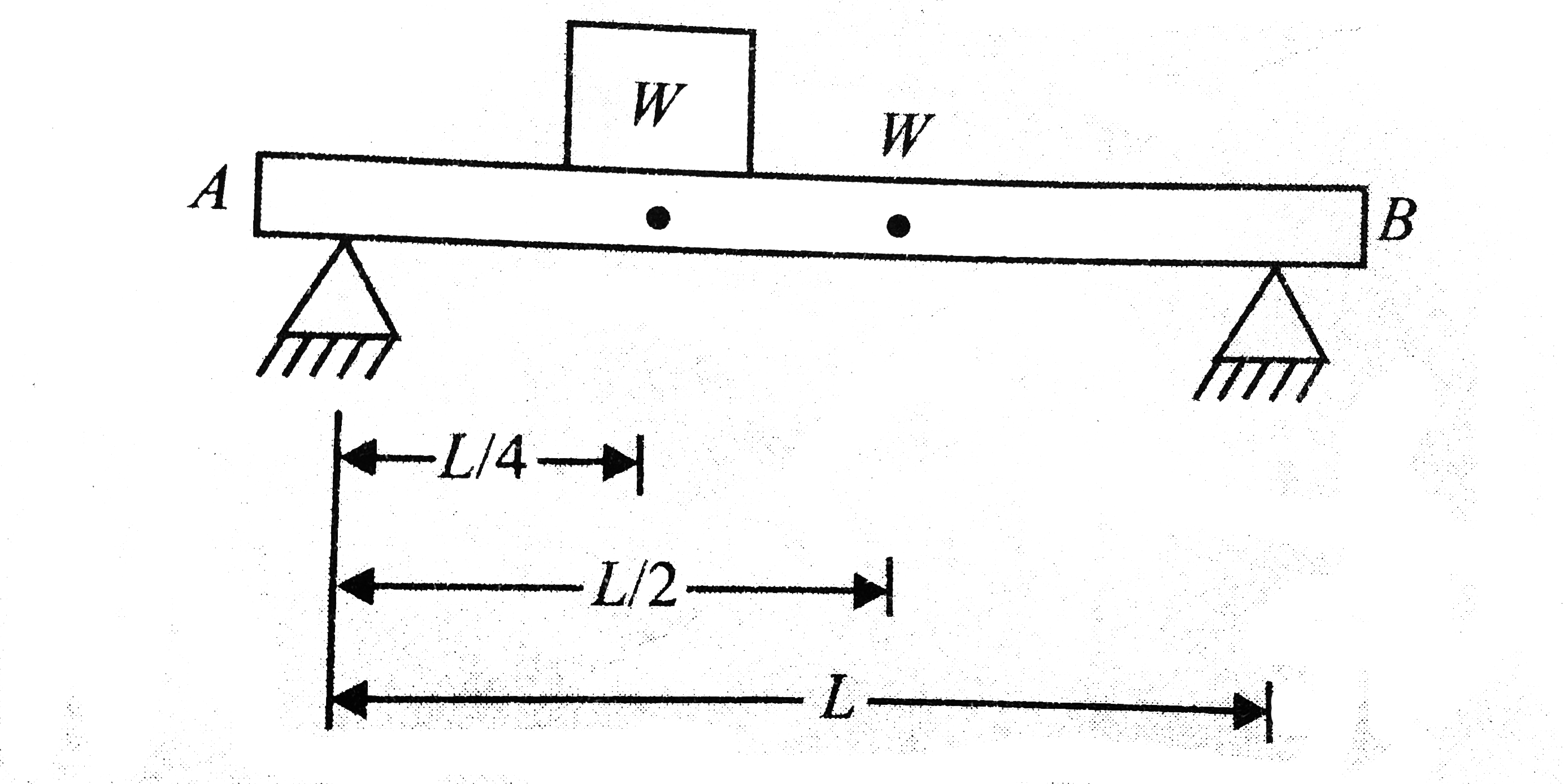Determine the reactions at the support A B C and D for the arrangement of compound beams shown in figa
This is the question of multiple beam i.e. beam on a beam. In this type of question first consider the top most beam then second last beam as In this problem on point E and F there are roller support and this support give reaction to both up and down beam. Consider FBD of top most beam EB as shown in figa∑V = 0;RE + RB – 10 – 4 – 6 – 8 = 0RE + RB = 28KN ........i10 × 1 + 4 × 2 + 6 × 3 + 8 × 4 – RB × 6 = 0RB = 11.33 KNPutting the value of RB in equation iRE = 16.67 KNConsider FBD of second beam AF as shown in figb∑V = 0;RA + RF – 6 – 8 – RE = 0 RA + RF = 30.67 KN........iiNow taking moment about point ‘A’6 × 1 + 8 × 2 + 16.67 × 3 – RF × 6 = 0RF = 12 KN .Putting the value of RF in equation iiRA = 18.67 KNConsider FBD of third beam CD as shown in figc∑V = 0;RC + RD – RF = 0RC + RD = 12 KN ........iiiNow taking moment about point ‘C’ – RD × 5 + 12 × 3 = 0RD = 7.2 KNPutting the value of RD in equation iiiRC = 4.8 KN.
Related Solutions
A uniform beam of length . And mass is supported as shown. Of the cable suddenly breaks, determine ,
(a) the acceleration of end .
(b) the reaction at the pin support.
 .View Solution
.View SolutionA uniform beam of length L . And mass m is supported as shown. Of the cable suddenly breaks, determine , (a) the acceleration of end B . (b) the reaction at the pin support. .
View SolutionArrange the following compounds in their increasing pK_(b) order: (a). (b). (c). (d).
View SolutionArrange the following compounds in the increasing order of their reactivity in nucleophilic addition reaction
A) Acetophenone B) Benzaldehyde C) Formaldehyde D) AcetoneView SolutionA beam of weight supports a block of weight . The length of the beam is . and weight is at a distance from the left end of the beam. The beam rests on two rigid supports at its ends. Find the reactions of the supports.
 View Solution
View SolutionA beam of weight supports a block of weight . The length of the beam is . and weight is at a distance from the left end of the beam. The beam rests on two rigid supports at its ends. Find the reactions of the supports.
 View Solution
View SolutionL लम्बाई व m द्रव्यमान की एक समान छड़ (beam) दर्शाए अनुसार व्यवस्थित है। यदि धागा अचानक टुट जाए, तो ज्ञात कीजिए।
(a) सिरे B का त्वरण
(b) किलकित पर प्रतिक्रिया
 View Solution
View SolutionGiven the following reaction involving A,B,C and D
(i)
(ii) NO reaction
(iii) NO reaction
(iv)
the correct arrangement of A,B,C,D in the order of their decreasing ability as reducing agentView SolutionGiven the following reaction involving A,B,C and D (i) C+B^(+) rarr C^(+)+B (ii) A^(-)+D rarr NO reaction (iii) C^(+)+A rarr NO reaction (iv) D+B^(+) rarr D^(+)+B the correct arrangement of A,B,C,D in the order of their decreasing ability as reducing agent
View SolutionThe arrangement to store two magnets is shown by figures (a), (b), (c) and (d) in Fig. 13.2. Which one of them is the correct arrangement
View SolutionAn aromatic compound ‘A’ of molecular formula undergoes a series of reactions as shown below. Write the structures of A, B, C, D and E in the following reactions:
 View Solution
View Solution
In the given reaction, the rates of reaction with respect to A, B, C and D are
Arrange them in the ascending order of their magnitude.View SolutionArrange the given compounds in the increasing order of carbon atoms present in the compounds
(a) Methane
(b) Sugar
(c) Glucose
(d) StarchView SolutionIn arrangement shown the block A of mass 15 supported in equilibrium by the block B. Mass of the block B is closest to
View SolutionIn arrangement shown the block A of mass 15 kg supported in equilibrium by the block B. Mass of the block B is closest to
View SolutionIn arrangement shown the block A of mass 15 supported in equilibrium by the block B. Mass of the block B is closest to
View SolutionIdentify the compounds (A) (B), (C), (D) in the following sequence of reactions:
View SolutionDraw the diagrams of
(a) Ray of light
(b) Convergent beam of light
(c) Divergent beam of light
(d) Parallel beam of lightView SolutionDraw the diagrams of
(a) Ray of light
(b) Convergent beam of light
(c) Divergent beam of light
(d) Parallel beam of lightView SolutionFind the magentic induction of the field at the pont O if a current-carrying wire has the shape shown in Figa,b,c The raidius of the curved part of the of the weir is R the linear parts are assumed to be very long.
View Solution
